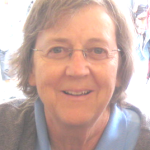The Rocky Mountain Institute’s (RMI) latest on-line update, “Spark,” had an article with a photo featuring the new Apple Watch that asks “Is wearable tech the next frontier of energy savings?”
RMI, in its own words, “is an independent, non-partisan nonprofit that drives the efficient and restorative use of resources. Cofounded in 1982 by Amory Lovins, its chairman emeritus and chief scientist, RMI has approximately 80 full-time staff, annual operations of $16 million and a global reach and reputation. I like the other part of their statement,”We are practitioners, not theorists. We do solutions, not problems.”
The essence of their argument on wearable tech that transmits data, can monitor our heart rate, track our location and recognize our voice is that among its many features, it could also save energy.
Tracking location isn’t new to mobile technology. Cell phones already track our location. The authors posit that wearable technology that has access to our biological data can interface with at least three levels of energy management opportunities in our homes, at the office and for ourselves personally.
Now, I must say that personally, I am not always comfortable that my location can be known by just anyone. For instance, I have a FasTrak device in my car that I don’t place in a mylar bag after each bridge toll crossing. So, in essence, my car is “findable.” And as I said above, if you carry a cell phone, you also can be located.
Now, back to energy management opportunities: In the home, wearable technology may do a better job matching energy needs of heating and cooling than the very sophisticated Nest learning thermostat. The wearable technology (it might even be woven into your pajamas!) might be programmed to record our sleep cycles and incorporate a family’s patterns to adjust the energy more accurately to the specifics of our day.
In the office, the wearable technology could aggregate the data of many people so that the temperature is adjusted accordingly. The authors suggest that voice recognition technology could even register verbal complaints about the conditions, which would help adjust the temperatures.
Hmmm, I wonder what Scott Adams, the cartoonist of the “Dilbert” strip, would do with that concept?
On a personal basis, the article anticipates wearable technology that is woven into fabric could itself provide heating and cooling as part of a garment’s function, thereby reducing the need for heating or cooling an entire room or building. I wonder if the folks at Polartec are thinking about this?
Given the advances in 3-D printing that can print technology-integrated fabrics among many other things, I will be most interested to see the evolution of wearable technology. I found a company called Sensoree that has created a headpiece called “NEUROtiQ” that is a “brain animated fabric.” It’s pretty cool and wild!
Locating the Sun
While touring around the Rocky Mountain Institute’s website I started to read articles in its summer 2014 “Solutions Journal.” There’s a comprehensive graphic on solar financing options for homeowners that I thought might be useful for anyone considering acquiring solar panels.
RMI based its information on a 6.5 kW solar Photovoltaic (PV) system with electricity priced at 12 cents per kilowatt hour national average retail, combined with a homeowner’s excellent credit rating and a $20,748 cost to buying a system outright.
We’re lucky that in Benicia, we have access to financing programs like the Property Accessed Clean Energy (PACE) program and the upcoming Home Energy Retrofit Opportunity (HERO) program. I’ve posted the link below.
Even more exciting and beneficial to everyone in Benicia, including commercial, residential, school district members and solar owners, is the potential that our city will join Marin Clean Energy as a clean energy provider.
If approved by City Council, this program will lower our electricity costs and pay more for excess solar sent to the grid by residents, the city and commercial establishments that are using solar.
Marin Clean Energy has determined that Benicia is a good fit for them and now City Council will decide Nov. 4, after a due diligence study is completed, if we will be able to enjoy the financial and environmental benefits of this option as well.
In the meantime, if you want to produce your own clean energy with solar panels, here’s the financing graphic that may be helpful:

Learn more:
• 3dprintingindustry.com/fashion/ – check out a series of fascinating updates!
• Rocky Mountain Institute blog: blog.rmi.org/blog_2014_10_02_is_wearable_tech_the_next_frontier_of_energy_savings
• Rocky Mountain Institute Solar financing
Constance Beutel is the chair of Benicia’s Community Sustainability Commission. She is a university professor and videographer and holds a doctorate from the University of San Francisco.







Leave a Reply